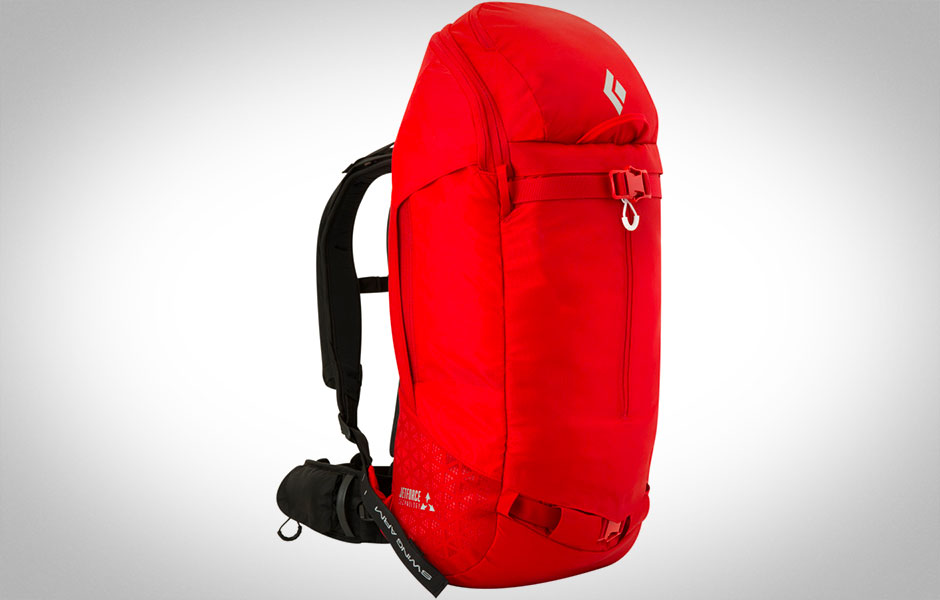The West Coast and Rockies are getting dumped on by epic storms this holiday season. It seems that every ski resort is inundated with winter refugees fleeing the warm weather further East. If you’ve reached the end of your patience for sitting in lift lines watching the early birds get all the sick powder, it might be time to venture out of the resort for the first time and start exploring the backcountry. A word of caution though, uphill skiing often turns into an addiction with symptoms that include jonesing for deep snow, becoming addicted to weather forecasts, and planning out your perfect mountain town cabin. If you can get past the worst of it though, backcountry skiing is one of the most rewarding and inspiring winter sports out there. This list is a few of our favorites for uphill skiing, both long tours into the wilds, and shorter half day excursions right outside of the resort.
Related: Ski Season Preview: Ski Gear Buyer’s Guide | Ski Season Preview: Salomon Mountain Collection
Black Diamond Saga 40 Jetforce
Since you’ll be carrying all your gear uphill rather than sitting on the lift, a good pack to haul it all is imperative. Black Diamond’s ski packs set an industry standard that is not often matched. The Saga 40 Jetforce adds in a fan driven avalanche airbag that will keep you afloat should the worst happen. (but it won’t because you got some avalanche awareness training and are making good decisions when the snow gets sketchy, right?)
Ortovox 3+ Avalanche Gear Kit
Your beacon, shovel, and probe are your lifeline, and last line of defense. No matter if you’re a well seasoned dawn patroller or getting out into the side country for your first time, this is the one set of gear that you don’t want to skimp on. Ortovox beacons have been our go to for a few seasons. the 3+ beacon is the only one on the market that features an accelerometer that helps choose the best antenna for both active search and passive situations. Get one, and then get some training and a lot of practice with it.
La Sportiva Vapor Svelte
Based on the award winning Vapro Nano powder ski, the Vapor Svelte is a serious backcountry climbing machine. Using carbon nanotube construction, it is 40% lighter than skis of similar size. It doesn’t sacrifice any downhill performance though. The carbon/kevlar core is stiff and can handle everything from soft powder to icy crust.
Arc’teryx Procline Kit
You probably recognize this set of pants and jacket from our Buyer’s Guide last week. We can’t stress enough how much we love the Procline kit. The Comp Jacket uses GORETEX fabric in the hood, chest, and arms to combat serious weather. Lighter, more breathable fabric lines the back, letting you dump moisture effectively while climbing. Nice touches like foam inserts in the hem to keep the jacket under your pack or harness, and glove friendly zipper and hood adjustment make this the best jacket for nasty mountain climbs that we’ve worn this season. Likewise, the FL Pants are designed to move fast and light. They are a thicker softshell material that sheds snow and stretches when you’re moving uphill and down. Instep reinforcements protect them from ski edges and crampons.
Atomic Backlands Carbon Light
Built much lighter than typical Alpine boots, the Backlands line is designed from the soles up to go uphill fast. The Carbon Light weighs in under a kilo per boot, and has seventy-four degrees of rotation when in climb mode. To say they are comfortable is a vast understatement. We can’t wait to get our pair out on some ski-mountaineering race courses later this season.
Smith Optics Captain’s Choice
Originally designed as a boating and fishing sunglass, we found the Captain’s choice is excellent at pulling double duty during high aerobic activities. It has an excellent anti-fog coating that stands up to heavy sweat in the cold, and is extremely comfortable. Make sure you opt for the Chromapop lenses for an added bonus.
Mammut Zephir Altitude and Serenity Rope
Mammut’s Swiss mountaineering heritage is readily evident in the Zephir Altitude harness. Built for alpine climbers and ski mountaineers who count every ounce, this mighty little harness goes in our pack whenever we are out bagging couloirs and also on race days when we’ll be getting on ropes ascending nasty sections of rock and rappeling into softer snow. Paired with the ultralight Serenity Rope, it makes a system that will get you up and down just about any technical section. We’ll be using ours in this season’s Powder Keg Ski Mountaineering Race, so stay tuned for more information as we beat on it throughout the season.
Dynafit TLT Radical ST 2.0
Dynafit is synonymous with European ski touring. They launched their low tech binding more than twenty years ago, and they still define the industry. This year, the TLT line has been updated with a pivoting toepiece that adds an extra degree of safety when charging downhill.
G3 Alpinist Climbing Skins
Climbing skins are your ticket to the top of the mountain. A good pair can handle everything from fluffy deep winter powder to slushy spring corn. We’ve got Alpinists for every pair of skis we own, and the optimal grip and glide are perfect for long days on the mountain. Make sure you order a pair that closely match the width of your skis (you can even err a little too big if you’re worried, as they are easily trimmed).
Herd Headwear Decoy Beanie
Not everything has to be the latest technical and ultralight. We like the Herd Decoy simply because it is comfortable and looks awesome no matter what we’re doing. The noticeable deer and snowflake pattern will make you easy to spot in crowded lift lines or ripping backcountry snow.












